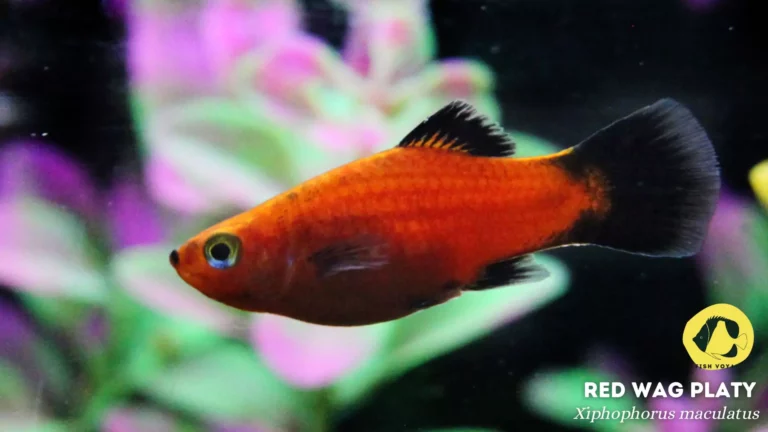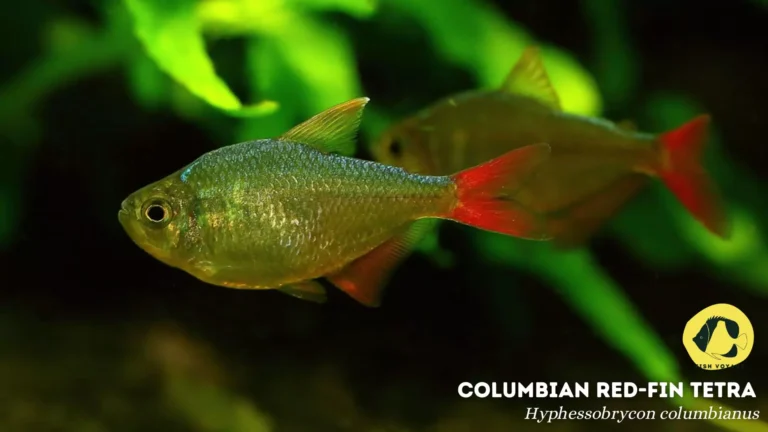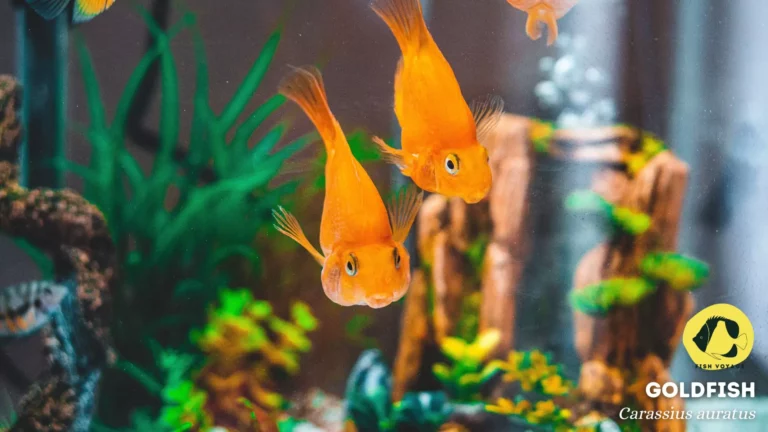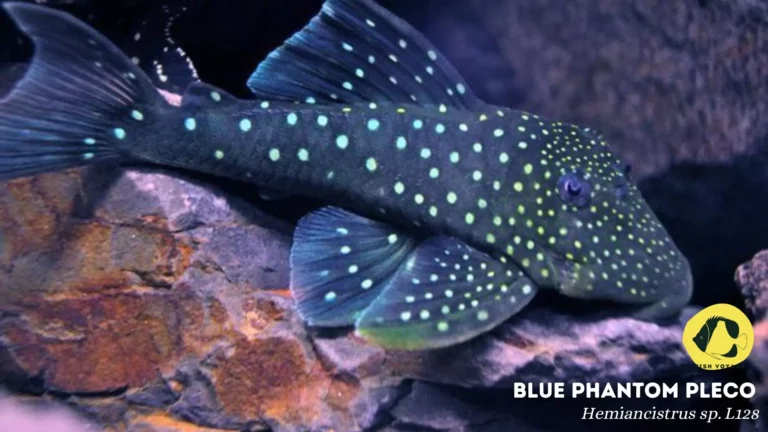The Ultimate Guide to Giant Danio Tank Size

Welcome to our exploration of the fascinating world of Giant Danios and the critical role that the right tank size plays in ensuring their well-being. Giant Danios (Devario aequipinnatus) are beloved among aquarium enthusiasts for their striking appearance, lively personality, and captivating schooling behavior. With their shimmering metallic bodies and distinctive stripes, these tropical freshwater fish add a vibrant touch to any aquarium. Choosing the right tank size for Giant Danios is paramount to providing them with a habitat that mirrors their natural tendencies and allows them to thrive. The significance of this decision extends beyond mere aesthetics; it directly influences their health, behavior, and overall quality of life.
In this guide, we’ll delve into the ideal tank sizes, factors influencing their need for space, and the intricate dynamics that impact the well-being of these dynamic aquatic companions. Stay tuned as we unveil key considerations, shedding light on the nuanced aspects of maintaining an optimal environment for Giant Danios.
Ideal Tank Size for Giant Danios
General Recommendations
- Minimum Tank Size: To ensure the well-being of your Giant Danios, a minimum tank size of 30 gallons is recommended. This allows them the space needed for natural behaviors and promotes a healthier environment.
- Consideration of Giant Danios Behavior: Understanding the social and active nature of Giant Danios is key. These fish thrive in groups and are known for their energetic swimming patterns. Therefore, a larger tank not only accommodates their social tendencies but also provides ample room for their active behavior.

Space for Swimming
- Active Nature of Giant Danios: Giant Danios are renowned for their constant movement and schooling behavior. In their natural habitat, they navigate open waters, and replicating this in captivity is crucial for their mental and physical health.
- Tank Size to the Fish’s Need for Swimming Space: The size of the tank directly correlates with the swimming space available to Giant Danios. In smaller tanks, their natural swimming behaviors may be restricted, leading to stress and potential health issues. Providing a spacious environment encourages their natural instincts, reduces aggression, and enhances their overall vitality.
By adhering to these guidelines, you not only meet the basic requirements for keeping Giant Danios but also create an environment that allows them to express their full range of behaviors, leading to a more vibrant and flourishing aquatic community.
Community Tank Considerations
Compatibility with Other Fish Species
- Social Behavior of Giant Danios: Giant Danios are inherently social creatures, thriving in the company of their own kind. Their schooling behavior not only adds visual appeal to the aquarium but also plays a crucial role in their well-being. It’s recommended to keep a group of at least five Giant Danios to ensure they feel secure and display their natural social interactions.
- Suitable Tankmates: When considering tankmates, opt for species that share similar water parameter requirements and temperaments. Compatible tankmates may include peaceful community fish like Tetras, Gouramis, and Corydoras. Avoid keeping them with aggressive or territorial species to prevent conflicts in the community.
Schooling Behavior
- Schooling Nature of Giant Danios: Giant Danios exhibit a strong inclination towards schooling. In a community tank, their schooling behavior becomes more pronounced, creating a visually stunning and dynamic display. Observing this natural behavior is not only aesthetically pleasing but also contributes to the overall mental well-being of the fish.
- How Tank Size Impacts Schooling Behavior: The size of the tank is a critical factor in facilitating the schooling behavior of Giant Danios. In a larger tank, these fish can school more freely, showcasing their synchronized movements and reducing the likelihood of stress. Adequate swimming space allows for natural schooling patterns, fostering a harmonious and visually engaging aquarium environment.
Ensuring compatibility and understanding the schooling dynamics of Giant Danios adds depth to your community tank, promoting a balanced ecosystem that enhances the health and happiness of all inhabitants.
Filtration and Maintenance
Impact of Tank Size on Water Parameters
- Understanding Water Parameters: The size of your tank directly influences water parameters. In larger tanks, maintaining stable water conditions becomes more crucial. Giant Danios are sensitive to changes, so regular monitoring of parameters like pH, ammonia, nitrite, and nitrate is essential for their well-being.
- Balancing Bioload: The bioload, determined by the number of fish and their size, increases with tank size. A larger tank provides more water volume to dilute waste, but diligent monitoring and appropriate filtration are necessary to prevent spikes in harmful substances.
Recommending Appropriate Filtration Systems
- Consideration of Tank Size in Filtration Choice: Selecting the right filtration system is paramount, especially in larger tanks. Canister filters or sump systems are ideal for handling the increased waste production. Ensure the chosen filter can handle a volume at least three to four times the total tank capacity per hour for effective filtration.
- Mechanical, Biological, and Chemical Filtration: Implement a filtration system that incorporates mechanical, biological, and chemical filtration. This comprehensive approach ensures the removal of physical debris, establishment of beneficial bacteria colonies, and the absorption of impurities, guaranteeing optimal water quality for Giant Danios.
Tips for Maintaining Water Quality in Larger Tanks
- Regular Water Testing: Conduct routine water tests to identify any deviations from the desired parameters. Addressing issues promptly helps maintain a stable environment and prevents stress-related health problems in Giant Danios.
- Strategic Placement of Decor and Substrate: Arrange decor and substrate in a way that promotes efficient water circulation. This aids in preventing debris accumulation in dead zones and ensures the filtration system can effectively process waste throughout the entire tank.
- Scheduled Water Changes: Even with a robust filtration system, regular partial water changes are vital. Aim for a 20-25% water change every two weeks to refresh the water, remove accumulated nitrates, and maintain overall water quality.
By recognizing the impact of tank size on water parameters, selecting appropriate filtration systems, and implementing effective maintenance strategies, you create an environment that promotes the health and longevity of your Giant Danios.
Common Mistakes to Avoid
Underestimating the Tank Size
- Significance of Adequate Space: One of the most common pitfalls is underestimating the required tank size for Giant Danios. Inadequate space inhibits their natural behaviors, leading to stress and potential health issues. Prioritize a spacious environment that allows these active fish to swim freely.
- Considering Future Growth: It’s essential to consider the potential growth of Giant Danios when selecting a tank. These fish can reach sizes of up to four inches, and a tank that seems spacious initially may become restrictive as they grow. Plan for the long term to avoid the need for frequent upgrades.
Overcrowding the Tank
- Balancing Fish Population: Overcrowding is detrimental to the well-being of Giant Danios. Maintaining a balance in fish population is crucial for preventing stress, aggression, and competition for resources. Follow recommended stocking guidelines and consider the specific needs of each species in your community tank.
- Impact on Water Quality: Overcrowded tanks lead to an increased bioload, straining the filtration system and compromising water quality. This can result in a cascade of health issues for Giant Danios. Prioritize the comfort and health of your fish by avoiding the temptation to overcrowd.
Neglecting the Need for Swimming Space
- Understanding Natural Behaviors: Giant Danios are known for their love of swimming and schooling. Neglecting their need for adequate swimming space curtails their natural behaviors and can lead to lethargy and stress. A larger tank not only accommodates their active nature but also fosters a more natural and enriching environment.
- Observing Behavioral Cues: Pay close attention to the behavior of your Giant Danios. If you notice them huddling in a corner or displaying erratic swimming patterns, it may indicate a lack of space. Provide an environment that allows them to express their natural instincts and behaviors.
By avoiding these common mistakes, you contribute to the overall well-being of your Giant Danios, creating a thriving and harmonious aquatic habitat.
Conclusion
In conclusion, providing the optimal tank size for Giant Danios is fundamental to their overall health and happiness. From understanding their social behavior and need for swimming space to avoiding common mistakes like underestimating tank size and overcrowding, every decision shapes their aquatic environment. Remember, a well-thought-out aquarium setup directly impacts the well-being of these lively fish. Prioritize spaciousness, compatibility with tankmates, and effective filtration to create an environment that mirrors their natural habitat.
As stewards of aquatic ecosystems, it’s our responsibility to ensure the welfare of the creatures in our care. Giant Danios, with their energetic personalities and schooling nature, deserve an environment that allows them to flourish. As you embark on your journey of creating a home for these remarkable fish, we encourage you to provide adequate space, embrace their social tendencies, and remain vigilant against common pitfalls. By doing so, you not only enhance the quality of life for your Giant Danios but also contribute to the beauty and balance of your aquarium. Remember, the key to a thriving aquatic community begins with the right amount of space for these captivating fish.
Thank you for joining us in this exploration of the ideal tank size for Giant Danios. May your aquarium endeavors be filled with joy, vibrant colors, and the harmonious dance of Giant Danios in their spacious aquatic haven.
Additional Resources
Links to Relevant Forums
- AquariumAdvice Forum – Giant Danios Section: Join the discussion on Giant Danios and tank size considerations with experienced aquarists. Share your experiences, ask questions, and learn from a community dedicated to the well-being of aquarium fish.
- Fishlore Community – Freshwater Fish Forum: Explore insights and tips on Giant Danio tank size in the dedicated freshwater fish forum on Fishlore. Engage with fellow enthusiasts, share your setup, and seek advice from a community passionate about responsible fishkeeping.
Links to Authoritative Books
- The Complete Encyclopedia of Freshwater Aquarium Fish by John Dawes: Delve into the comprehensive guide by John Dawes, covering various aspects of freshwater aquariums, including detailed insights on Giant Danios. Learn about ideal tank sizes, behavior, and maintaining optimal conditions for these captivating fish.
- Aquarium Care of Fancy Guppies by Stan Shubel: While focused on Guppies, Stan Shubel’s book provides valuable principles of aquarium care that are applicable to various freshwater fish, including Giant Danios. Explore chapters on tank size, water quality, and creating a thriving environment.
These resources serve as valuable extensions to your knowledge on Giant Danio tank size. Participate in forums to benefit from collective experiences, and consult authoritative books for in-depth insights into creating an optimal habitat for your Giant Danios.
Frequently Asked Questions (FAQs)
1. What is the minimum tank size recommended for Giant Danios?
The minimum tank size for Giant Danios is 30 gallons. This ensures they have enough space to exhibit their natural behaviors and swim freely.
2. Can I keep Giant Danios in a community tank, and how does it affect tank size requirements?
Yes, Giant Danios are social fish and can be kept in a community tank. However, the tank size should be adjusted based on the number of fish and other species present. A larger tank helps prevent overcrowding and promotes harmonious interactions.
3. How does tank size impact the schooling behavior of Giant Danios?
Tank size plays a crucial role in the schooling behavior of Giant Danios. In a larger tank, these fish can school more naturally, showcasing synchronized movements and reducing stress. Adequate swimming space encourages their schooling instincts.
4. What are the signs that my Giant Danios need a larger tank?
Signs include erratic swimming patterns, hiding in corners, or increased aggression. If you observe these behaviors, it may indicate a need for more space. Consider upgrading to a larger tank to meet their requirements.
5. How often should I perform water changes in a tank with Giant Danios, and does tank size influence this?
Regular water changes are essential for maintaining water quality. In larger tanks, aim for a 20-25% water change every two weeks. The larger water volume helps dilute waste, reducing the impact on water parameters.






